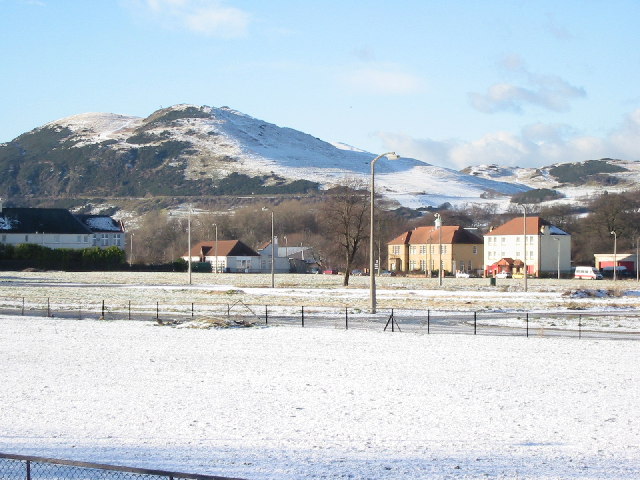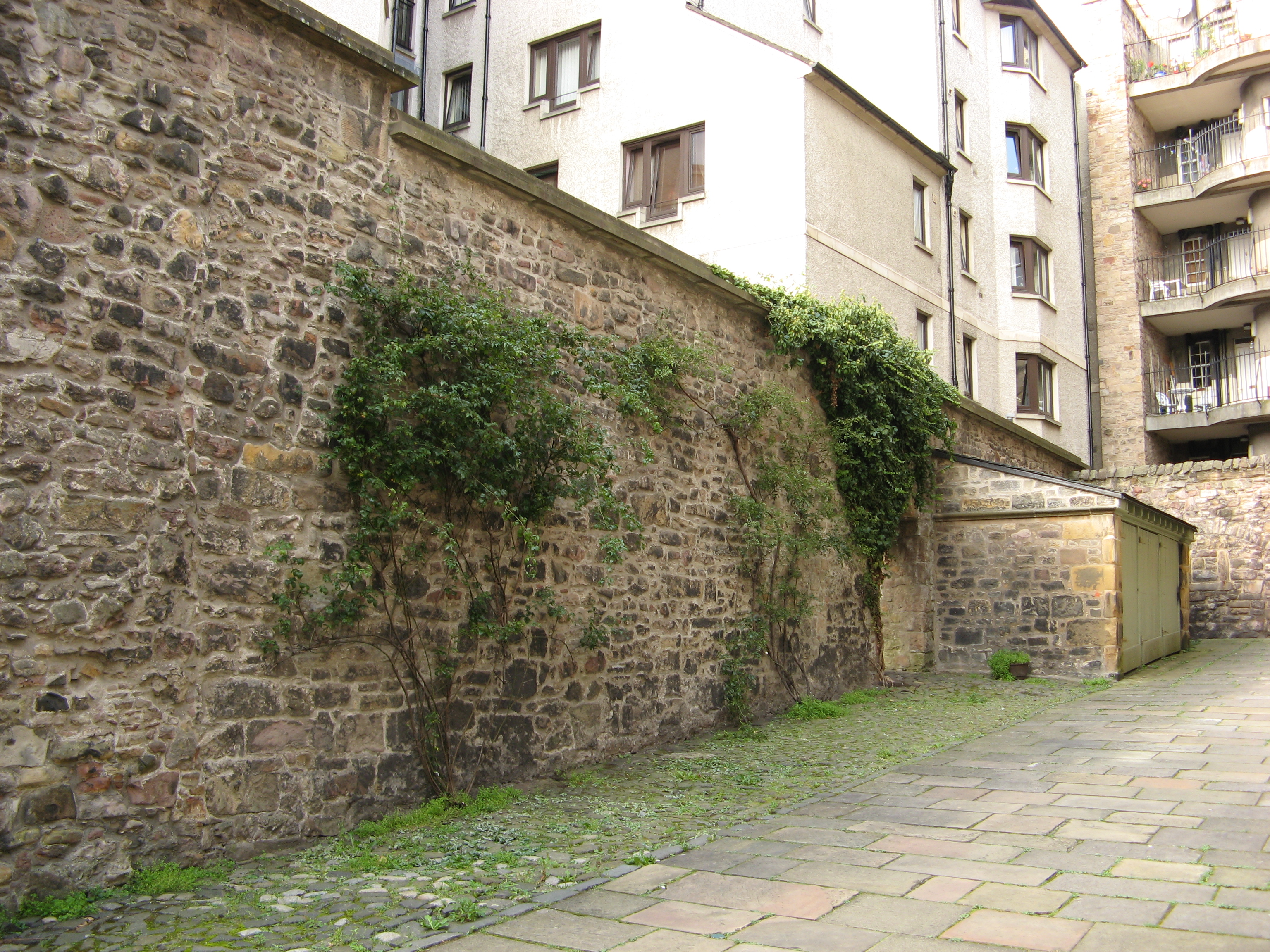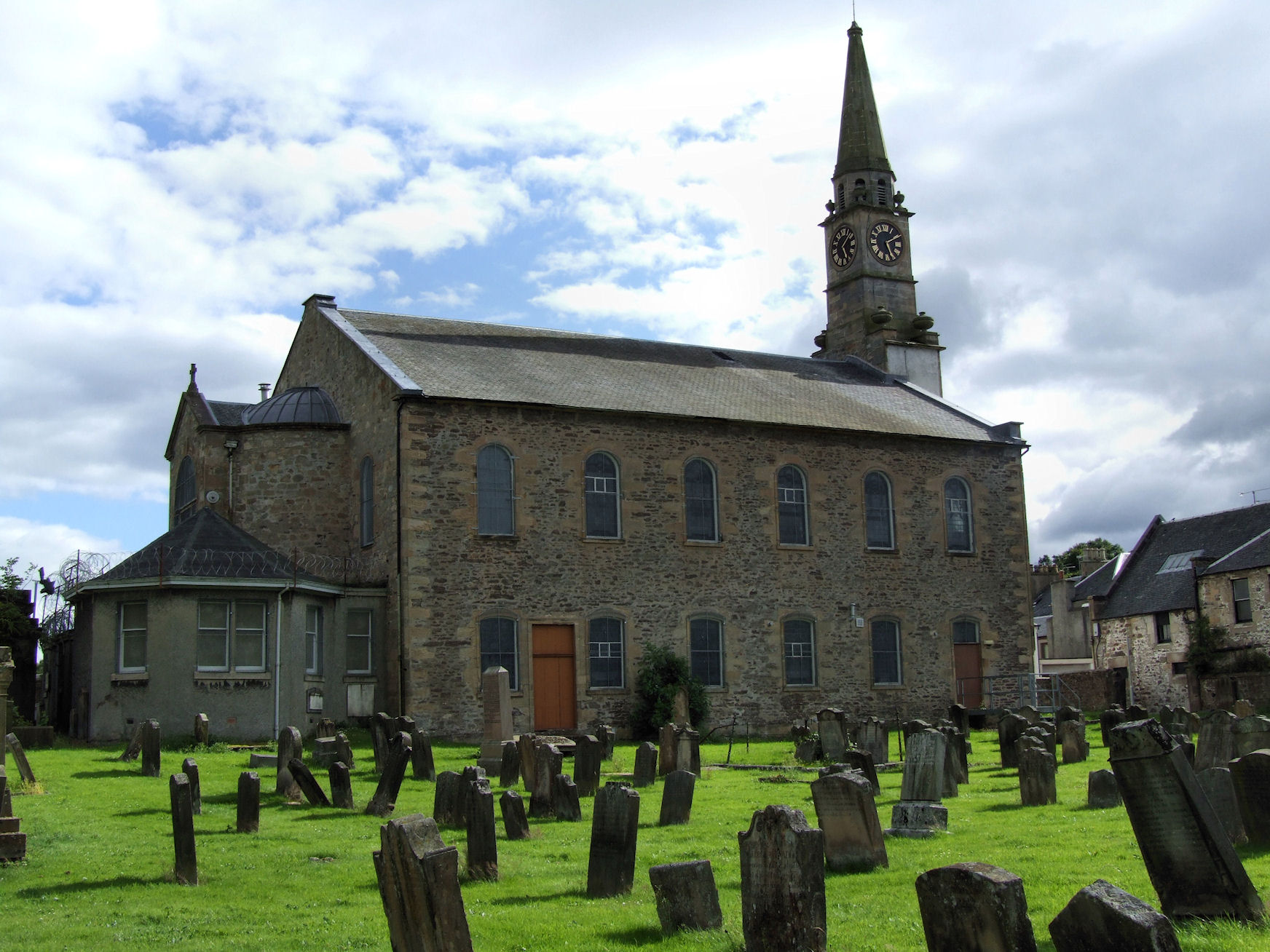|
Archibald Wauchope Of Niddrie
Archibald Wauchope of Niddrie ( – 1597) Scottish landowner and rebel. He was the son of Robert Wauchope of Niddrie, who died in 1598, and Margaret Dundas, daughter of James Dundas of Dundas. He was known as the "Laird of Niddrie, younger". The Wauchope lands were at Niddrie, Edinburgh, also called "Niddrie-Merschell". Career In 1580 at Peffermill, Wauchope and his servant Joseph Reidpath killed Gilbert Home, a servant of John Bothwell, Abbot of Holyrood, who had criticised him for hitting an officer-at-arms. The Home family accepted Wauchope's humiliation and repentance. In 1588 Wauchope and his father were involved in the murders of James and John Giffart of Sherriffhall, Robert Caise in Dalkeith, and John Edmiston, brother of the Laird of Womett. He was captured at Bridgend on 12 May 1589 by Andrew Edmonstone, after a short siege was ended by James VI, and brought to Edinburgh. James Sandilands of Slamannan helped Wauchope escape from a window of Edinburgh's Tolbooth in ... [...More Info...] [...Related Items...] OR: [Wikipedia] [Google] [Baidu] |
Dundas Castle
Dundas Castle is a 15th-century castle, with substantial 19th-century additions by William Burn, in the Dalmeny parish of West Lothian, Scotland. The home of the Dundas family since the Middle Ages, it was sold in the late 19th century and is currently the residence of politician and businessman Sir Jack Stewart-Clark. The tower house and the adjoining Tudor-Gothic mansion are listed separately as Category A buildings, and the grounds are included in Inventory of Gardens and Designed Landscapes in Scotland. History The name Dundas comes from the Gaelic ''dùn deas'', meaning 'south hill' or 'pretty hill'. In the 11th century, the lands of Dundas, along with other land in Lothian, were granted by King Malcolm Canmore to Gospatrick, the earl of Northumbria, who had come north to escape William the Conqueror. The lands of Dundas passed to his great-grandson Waldeve, who granted them to his kinsman Helias in a charter dating from around 1180. Helias took his surname from his lands ... [...More Info...] [...Related Items...] OR: [Wikipedia] [Google] [Baidu] |
Francis Stewart, 5th Earl Of Bothwell
Francis may refer to: People *Pope Francis, the head of the Catholic Church and sovereign of the Vatican City State and Bishop of Rome * Francis (given name), including a list of people and fictional characters *Francis (surname) Places * Rural Municipality of Francis No. 127, Saskatchewan, Canada * Francis, Saskatchewan, Canada **Francis (electoral district) * Francis, Nebraska *Francis Township, Holt County, Nebraska * Francis, Oklahoma *Francis, Utah Other uses * ''Francis'' (film), the first of a series of comedies featuring Francis the Talking Mule, voiced by Chill Wills *''Francis'', a 1983 play by Julian Mitchell * FRANCIS, a bibliographic database * ''Francis'' (1793), a colonial schooner in Australia * Francis turbine, a type of water turbine * Francis (band), a Sweden-based folk band * Francis, a character played by YouTuber Boogie2988 See also * Saint Francis (other) * Francies, a surname, including a list of people with the name * Francisco (disambiguation ... [...More Info...] [...Related Items...] OR: [Wikipedia] [Google] [Baidu] |
Inchkeith
Inchkeith (from the gd, Innis Cheith) is an island in the Firth of Forth, Scotland, administratively part of the Fife council area. Inchkeith has had a colourful history as a result of its proximity to Edinburgh and strategic location for use as home for Inchkeith Lighthouse and for military purposes defending the Firth of Forth from attack from shipping, and more recently protecting the upstream Forth Bridge and Rosyth Dockyard. Inchkeith has, by some accounts, been inhabited (intermittently) for almost 1,800 years. Geography, geology and climate The island lies in the midst of the Firth of Forth, midway between Kirkcaldy to the north and Leith to the south. Due to the undulation of the Fife coast it lies substantially closer to Fife rather than Midlothian, the closest settlement being Kinghorn to the north, with Burntisland to the north-west being only slightly more distant. Although most of the island is of volcanic origin, the island's geology is surprisingly varied. A ... [...More Info...] [...Related Items...] OR: [Wikipedia] [Google] [Baidu] |
River Forth
The River Forth is a major river in central Scotland, long, which drains into the North Sea on the east coast of the country. Its drainage basin covers much of Stirlingshire in Scotland's Central Belt. The Gaelic name for the upper reach of the river, above Stirling, is ''Abhainn Dubh'', meaning "black river". The name for the river below the tidal reach (just past where it is crossed by the M9 motorway) is ''Uisge For''. Name ''Forth'' derives from Proto-Celtic ''*Vo-rit-ia'' (slow running), yielding '' Foirthe'' in Old Gaelic. Course The Forth rises in the Trossachs, a mountainous area west of Stirling. Ben Lomond's eastern slopes drain into the Duchray Water, which meets with Avondhu River coming from Loch Ard. The confluence of these two streams is the nominal start of the River Forth. From there it flows roughly eastward through Aberfoyle, joining with the Kelty Water about 5 km further downstream. It then flows into the flat expanse of the Carse of Stirling, in ... [...More Info...] [...Related Items...] OR: [Wikipedia] [Google] [Baidu] |
Robert Bowes (diplomat)
Robert Bowes (1535?–1597) was an English diplomat, stationed as permanent ambassador to Scotland from 1577 to 1583. Family Robert Bowes was the fifth but second surviving son of Richard Bowes (d. 10 November 1558) and Elizabeth Aske. He had four elder brothers, Ralph, Francis, George (d. 20 August 1580), and Christopher, and seven sisters: Bridget, who married Thomas Hussey; Anne, who married Marmaduke Vincent; Muriel, who married John Jackson; Margery, who married the Scottish reformer John Knox; Elizabeth, who married George Bainbrigge; Margaret, who married firstly Thomas Middleton and secondly Ambrose Birkbeck; and Jane. Career He was educated at Queens' College, Cambridge. He served under his father in the defence of the borders. In 1569 he was sheriff of the county palatine of Durham, and helped his brother, Sir George Bowes, to hold Barnard Castle against the rebel earls. Afterwards he was sent in command of a troop of horse to protect the west marches. In 1571 he ... [...More Info...] [...Related Items...] OR: [Wikipedia] [Google] [Baidu] |
Margaret Lyon
Margaret Lyon (died 1625) was a Scottish aristocrat and landowner. She was the daughter of John Lyon, 7th Lord Glamis and Janet Keith, daughter of Robert Keith, Master of Marischal, and sister of William Keith, 4th Earl Marischal. Families She married Gilbert Kennedy, 4th Earl of Cassilis (d. 1576), and became the "Countess of Cassilis". Their children included: * John Kennedy, 5th Earl of Cassilis (1575–1615) * Hew Kennedy, Master of Cassilis (1576/77-1607) In 1578 she married John, Lord Hamilton, Commendator of Arbroath (d. 1604). Their marriage contract was made at Maybole Castle on 30 December 1577. He was made Marquess of Hamilton in 1599. Their children included: *James Hamilton, 2nd Marquess of Hamilton (1589–1625). *Margaret Hamilton, who married John Maxwell, 9th Lord Maxwell. Career In June 1579 her income and properties were forfeited to the crown because her husband Lord Hamilton was declared a rebel. The Hamilton family lands had been raided by Regent Morton a ... [...More Info...] [...Related Items...] OR: [Wikipedia] [Google] [Baidu] |
Sir John Carmichael
Sir John Carmichael (died 16 June 1600) was a Scottish soldier, the Keeper of Liddesdale, a diplomat, and owner of Fenton Tower at Kingston, East Lothian. Career He was the son of John Carmichael and Elizabeth Somerville, a daughter of Hugh Somerville, 5th Lord Somerville. The estate and village of Carmichael is in South Lanarkshire. He was active in the Marian Civil War, and in September 1571 the Earl of Morton wrote approvingly of an incident where he had chased and fought some horsemen of Queen Mary's side near Edinburgh. He was appointed warden of the Scottish West March. In 1573 Regent Morton went to Jedburgh to hold justice courts, and he sent Carmichael to arrest Black John Ormeston for his involvement in the murder of Lord Darnley. In 1574 Carmichael was recommended for a pension from England, given to those of power and influence who could support English interests in Scotland. He was said to be "a favourer of the amity, a good executioner, and in favour with the Re ... [...More Info...] [...Related Items...] OR: [Wikipedia] [Google] [Baidu] |
Royal Mile
The Royal Mile () is a succession of streets forming the main thoroughfare of the Old Town of the city of Edinburgh in Scotland. The term was first used descriptively in W. M. Gilbert's ''Edinburgh in the Nineteenth Century'' (1901), describing the city "with its Castle and Palace and the royal mile between", and was further popularised as the title of a guidebook by R. T. Skinner published in 1920, "''The Royal Mile (Edinburgh) Castle to Holyrood(house)''". The Royal Mile runs between two significant locations in the royal history of Scotland: Edinburgh Castle and Holyrood Palace. The name derives from it being the traditional processional route of monarchs, with a total length of approximately one Scots mile, a now obsolete measurement measuring 1.81km. The streets which make up the Royal Mile are (west to east) Castlehill, the Lawnmarket, the High Street, the Canongate and Abbey Strand. The Royal Mile is the busiest tourist street in the Old Town, rivalled only ... [...More Info...] [...Related Items...] OR: [Wikipedia] [Google] [Baidu] |
Netherbow
There have been several town walls around Edinburgh, Scotland, since the 12th century. Some form of wall probably existed from the foundation of the royal burgh in around 1125, though the first building is recorded in the mid-15th century, when the King's Wall was constructed. In the 16th century the more extensive Flodden Wall was erected, following the Scots' defeat at the Battle of Flodden in 1513. This was extended by the Telfer Wall in the early 17th century. The walls had a number of gates, known as ports, the most important being the Netherbow Port, which stood halfway down the Royal Mile. This gave access from the Canongate which was, at that time, a separate burgh. The walls never proved very successful as defensive structures, and were easily breached on more than one occasion. They served more as a means of controlling trade and taxing goods, and as a deterrent to smugglers. By the mid 18th century, the walls had outlived both their defensive and trade purposes, and d ... [...More Info...] [...Related Items...] OR: [Wikipedia] [Google] [Baidu] |
Craignethan Castle
Craignethan Castle is a ruined castle in South Lanarkshire, Scotland. It is located above the River Nethan, a tributary of the River Clyde, at . The castle is two miles west of the village of Crossford, and 4.5 miles north-west of Lanark. Built in the first half of the 16th century, Craignethan is recognised as an excellent early example of a sophisticated artillery fortification, although its defences were never fully tested. History The barony of Draffane, in which Craignethan was located, was a property of the Black Douglases until their forfeiture in 1455. The land was granted to the Hamilton family, and in 1530 was given by James Hamilton, 1st Earl of Arran to his illegitimate son James Hamilton of Finnart. James Hamilton of Finnart had travelled in Europe, and had become an accomplished architect and military engineer. Appointed Kings Master of Works, he was responsible for the defences at Blackness Castle, as well as the renaissance facades of Linlithgow Palace. At Craig ... [...More Info...] [...Related Items...] OR: [Wikipedia] [Google] [Baidu] |
John Hamilton, 1st Marquess Of Hamilton
John Hamilton, 1st Marquess of Hamilton (1540–1604) was the founder of the long line of the marquesses and dukes of Hamilton in Scotland. Birth and origins John was born about 1540 in Scotland. He was the third son of James Hamilton and his wife Margaret Douglas. His father was the 2nd Earl of Arran and Duke of Châtellerault in France. John's mother was a daughter of James Douglas, 3rd Earl of Morton. Both parents were Scottish. They had married in September 1532. John was one of nine siblings, who are listed in his father's article. Early life On 28 November 1547, John, still a boy, was appointed Commendator of Inchaffray Abbey, a position he held until 1551, when he was made Commendator of Arbroath instead. He had the benefit of Arbroath until 1579, although his right was disputed by George Douglas (a natural son of the Earl of Angus who would later become Bishop of Moray). His family supported Mary, Queen of Scots, even after her imprison ... [...More Info...] [...Related Items...] OR: [Wikipedia] [Google] [Baidu] |
Lesmahagow
Lesmahagow ( ; sco, Lismahagie or ''Lesmahagae'', gd, Lios MoChuda) is a small town in the historic county of Lanarkshire on the edge of moorland, near Lanark in the central belt of Scotland. Lesmahagow was also a civil parish. It lies west of the M74, and southeast of Kirkmuirhill. It is also known as Abbey Green or the Gow. Etymology The name means "Enclosure (meaning a walled area, like a monastery or fort) of St Machutus". The saint was born in Wales and may originally have been known as ''"Mahagw"'' prior to emigrating to Brittany where he became known by the Latinised form of the name and also as "St Malo". It is also possible that the first syllable may mean "garden" rather than "monastery", although Mac an Tailleir (2003) believes the former was altered from the latter in Gaelic. Religion The town has three Christian congregations, namely Lesmahagow Old Parish Church of the Church of Scotland and Abbeygreen Church of the Free Church of Scotland and an Evangel ... [...More Info...] [...Related Items...] OR: [Wikipedia] [Google] [Baidu] |





